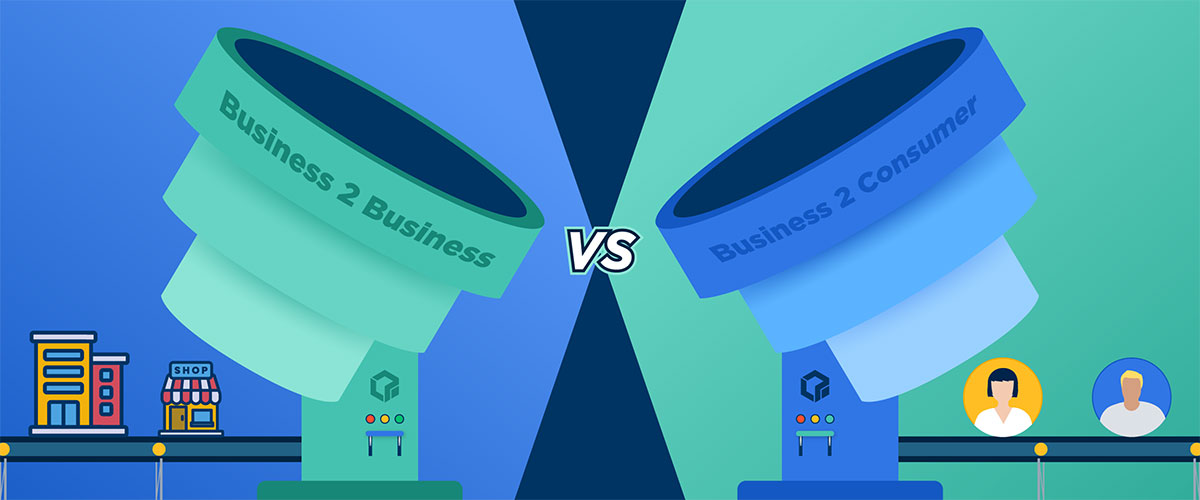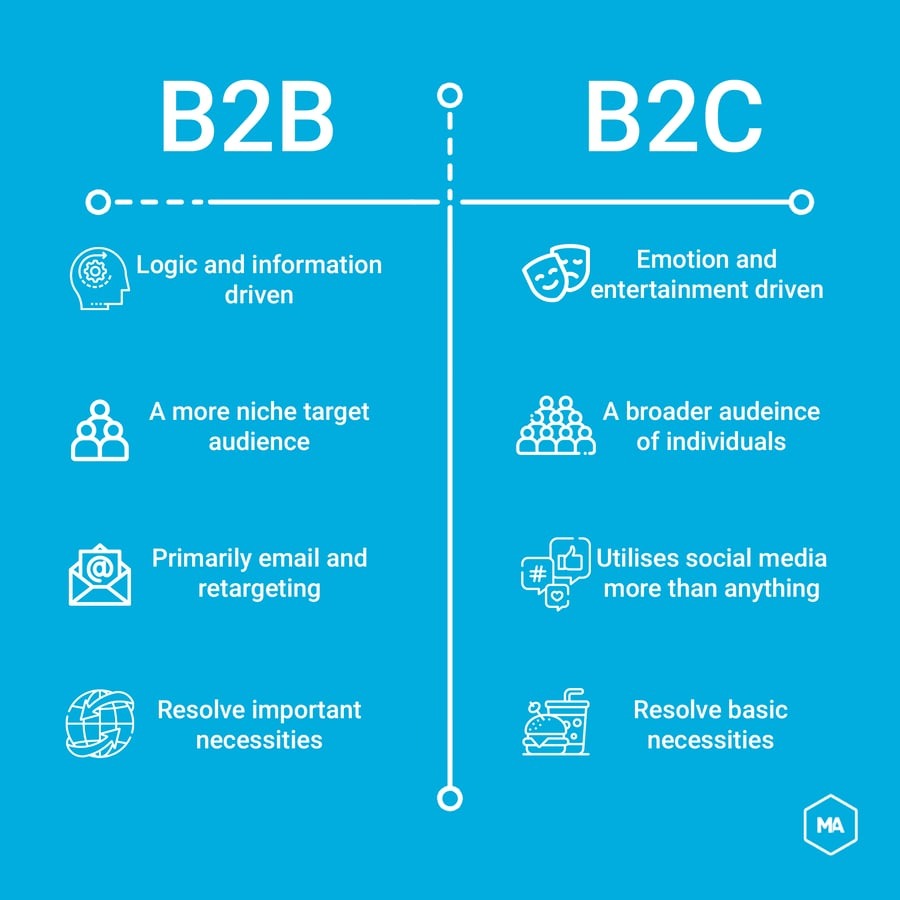
B2B (Business-to-Business) and B2C (Business-to-Consumer) Lead Generation are two distinct approaches to acquiring potential customers for different types of businesses. Every business looks for leads, but the way leads are gained depends on the business. Lead generation is how prospective customers are targeted, informed about, and kept interested in a product or service with the goal of converting them into buyers. When it comes to PPC lead generation for a business-to-business versus a business-to-consumer company, it’s often a case of things being the same, but different. Here’s a quick breakdown on B2B vs. B2C lead generation and the differences and similarities between the two.
The Differences

B2B Lead Generation Can Cost More
If you’re selling to other businesses, the dollar value for lead gen can often be higher than it is for B2C. B2B frequently deals in substantial inventory or ongoing services, and the costs may consequently be much higher than they are for products and services aimed at an end consumer. Because of this, keywords for B2B are often more competitive regarding costs-per-click (CPC) and ad space.
Be Smarter With B2B Lead Generation
B2B target markets tend to be savvier about their needs. Companies know exactly what they require in terms of equipment, maintenance, specifications, and the like. When approaching potential clients, educate yourself about what their company needs. Provide clear, precise, and robust information in your ads and on your site about what you offer and how it beats your competition.
B2B Sales Cycles Tend To Be Longer
One of the big benefits of B2C over B2B is the opportunity to be more nimble and to make quick decisions. The sales cycle is somewhat longer for B2B. Companies plan purchases well in advance and usually have to “sell” their stakeholders on a purchase before making it. Their ad schedule is more locked in. Ads should run Monday through Friday during regular business hours (depending on the business). Consumers, on the other hand, shop anytime, often during off-hours, on weekends, and away from the office (and sometimes in it). It’s all worth considering when budgeting for and selecting the times you run ads, as well as the ongoing optimizations that are required for a successful lead generation Google Ads account.
The Similarities
Account Set-Ups for B2B and B2C Are Comparable
Despite their differences, B2B and B2C accounts are run in much the same way. Accounts are similar in how you track conversions and present and handle website lead forms and telephone calls, and so on. Optimizing the accounts around conversions is similar as well. Metrics for B2B and B2C may be different regarding volume, but budgeting is fairly uniform in that you’re always trying to push your budget toward whatever is generating the conversions and leads most efficiently.
Website Layouts Share Features
Effective website layouts have homogenous traits. Content differs, of course. As mentioned above, B2B customers are often more savvy about what they’re looking for, so ensure your B2B website packs an informational punch with a lot of details. Otherwise, keep the site easy to use and navigate. Help people find what they’re looking for, and show them the way if they don’t. Provide potent calls to action, and funnel them toward calling you or filling out a contact form or calling in.
Similar Conversion Tracking
Traffic, conversions, and website engagement are the meat and potatoes of tracking. The products and orders might be bigger in B2B versus B2C, but they are all tracked the same way, whether your customers are regular retail consumers or industry customers and colleagues. Stay on top of your data!
B2B? B2C? Consult With Blue Point!
If you have a B2B or B2C business and need help with Google lead generation or pay-per-click marketing services, contact Blue Point Advertising. We have a variety of options for generating leads and assisting with your digital marketing efforts!

